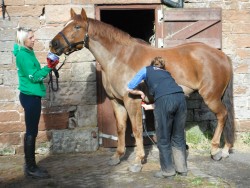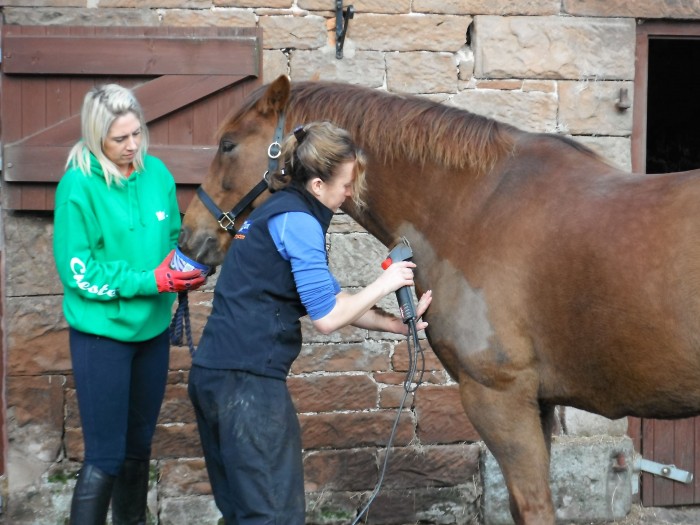Once again we are faced with the time of year that results in us being hairier than our horses! Many people choose to clip during the autumn and winter and by doing so equine management can be made significantly simpler, however clipping is quite an art!
Your checklist before you start…
- Ensure the floor is clean and dry and you are in a safe, secure area. Close any yard gates, just in case the horse escapes.
- Electric clippers should always be plugged into a circuit breaker as this will cut off the electricity in an emergency.
- Ensure your blades are sharp and that you have enough clipper oil.
- Tension the blades according to the manufacturer’s guidelines. Over-tensioned blades will get hot quickly and under-tensioned blades won’t clip properly.
- Plait the bottom of your horse’s tail so it does not get in the way and put a tail bandage on the top. Consider plaiting the mane, especially if you have a native or a horse with a thick mane.
- ALWAYS have a helper on hand.
- Wear old clothing that can be easily washed as horse hair has a habit of sticking everywhere! An old boiler suit or a cagoule is ideal.
- Safety comes first so make sure you have a hard hat to hand – especially for a young or nervous horse.
- Get your horse used to having his favourite Mini Horslyx as a reward prior to clipping so that when you need a quick distraction during tricky situations, you can rest assured their attention will instantly turn to the lick!
When you have everything set up make sure the horse is clean (free from mud) and dry. Try using a light spray of coat conditioner on greasy areas to help the clippers glide through the hair easier. Dirty horses blunt your blades so generally the cleaner they are the easier they are to clip.
Always go for the minimal clip you think your horse needs – you can always take more off at a later date but you can’t stick it back on again! If you are clipping ‘lines’ it is easier to use the natural contour of the horse (for example muscle groupings, or conformational points) than trying to draw lines with chalk. When clipping it is really important to oil you blades regularly and clean your air vents. Use separate brushes to clean your blades and vents otherwise the oil from the blades will clog up the vents and limit airflow.
Once you have finished clipping your horse brush them off using a soft body brush to remove all of the excess lose hair and scurf. Following brushing try ‘hot clothing’. Use a flannel, or towel, in some hot water with a small splash of dettol, wring the cloth out until damp and wipe over the horse in big circular movements. This will lift all small loose hairs and grease from the coat, which will not only look good but more importantly will feel better for your horse and help to stop him itching.
If you have a young or nervous horse use a distraction such as a Mini Horslyx – especially if they are a lover of food! This can help to settle them when you first start to clip or doing any ‘tickly’ places and you can offer it by hand or in a bucket. Safety is key however and if the horse is scared he may be dangerous and it is always worth considering speaking to your vet about sedation rather than anyone getting hurt.
Safely does it
Clipping even the quietest of horses can be dangerous so it is important that only experienced people attempt to clip. If you have never clipped a horse before please do get someone to show you how to clip safely.
Mini Horslyx provides a healthy and nutritious way to distract your equine without having to provide concentrate feed, short-lived treats such as apples and carrots or a haynet. Every Mini Horslyx contains a 3 day supply of the vital vitamins, minerals, trace elements and natural anti-oxidants needed to support the immune system and encourage overall health, so you can be sure your equine friend is getting exactly what he needs whilst you “get the job done” with minimal protests!
For further information and to watch a guide to clipping with the help of Mini Horslyx check out our YouTube channel.

